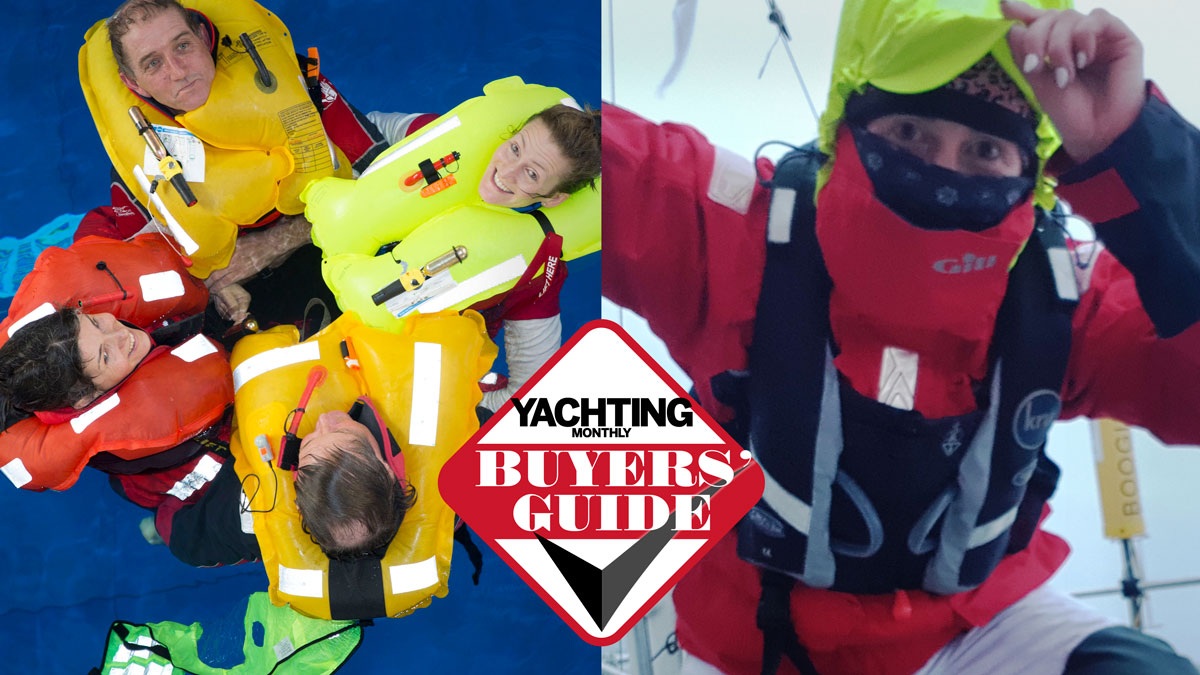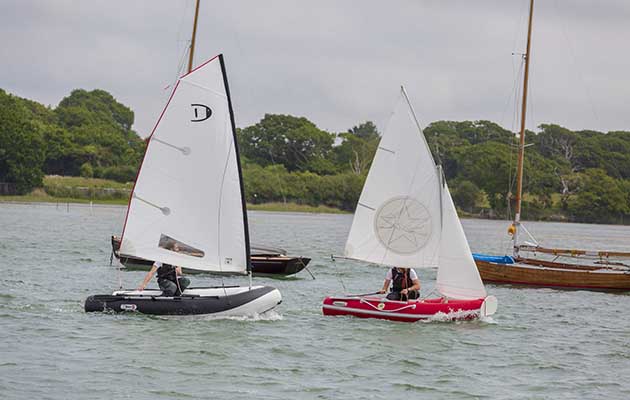Are you kitted out for tender travel? Chris Beeson reminds you what you need and why
How to use a tender safely

Chris Beeson
Trips in the tender are usually brief and uneventful, but some are longer.
If you decide to pack a lunch and explore upriver, you may want extra kit, like the grapnel anchor and short chain and warp we see in the bow of the tender above, but most are short ferry trips.
That being the case, it’s easy to become blasé about them but if, for whatever reason, something goes wrong, you’ll need a Plan B.
This is just a quick reminder about what you need to do to ensure you arrive safely.
Fit a long painter

A long painter leaves space for others
Dinghy docks can get very busy.
A long painter allows you to tie up your tender and let it drift out so others can do the same.
It’s also handy, as seen above, for securing the tender’s bow and stern, which makes it safer to board or disembark via the transom.
Check your tube pressure

An in-line pressure gauge costs less than £20
Pump up the tender to the correct pressure, as recommended by the manufacturer.
Few tenders are sold with a pressure gauge included but you can buy one in the chandler’s.
Don’t forget to take the pump with you too, just in case.
Dip the fuel tank

Check your fuel level before you leave
You’ve spent too long shopping, the ebb’s started and you’ve got to get half a mile upriver.
You fire up the outboard, zip off and the engine dies, leaving you with an energy-sapping row back to the boat.
Check the tank and it could save you a back-breaking hour.
Use an outboard lanyard

A lanyard could save your outboard
When transferring the outboard from boat to tender, and vice versa, the person not holding the engine grabs the lanyard.
That way, if someone drops the outboard, you can stop it sinking.
When it’s on the tender’s transom, tie the end to a strongpoint onboard.
Tighten the clamps

Spin them up tight to make sure it stays put
Once the outboard’s in position, twirl up the clamps tight.
Check them now and then during the trip to make sure the engine’s vibration hasn’t loosened them.
Outboard theft isn’t uncommon, so, if you’re leaving her for a while, padlock the clamps together.
Bring the oars

You can row your way out of most scrapes
Whether it’s the mercurial nature of outboards, or just a peaceful evening in an anchorage that you don’t want to spoil, a good pair of oars is essential.
If you can’t row a fair distance with the ones that came with your tender, buy a decent pair.
Rig the killcord

It takes seconds to fit. Don’t forget it
No-one needs reminding why this is absolutely essential.
This wriggly bit of plastic with a clip at either end is an unlikely looking lifesaver, but that’s exactly what it is.
Don’t go anywhere without it.
Stow it away from UV when not in use, it will last longer.
Bring spare fuel

Bring spare fuel and secure the can
You’ll be glad of it if you’ve got a long chug ahead.
It’s also easier to take the humble jerrycan to the petrol station.
Tie it to the thwart with a bit of gash line so it won’t bounce out if you hit a wave, and fill the tank in gulps. Don’t pour fuel or it could overflow.
Wear a lifejacket

It’s a simple enough rule, don’t break it
If you’ve never tried scrambling from the water into an inflatable tender, worse still a rigid tender, you should give it a go.
See how you get on.
Perhaps then you won’t need convincing to wear a lifejacket for every tender trip, no matter how short.
Continues below…
We Tested The Best Inflatable Lifejacket and PFD’s for Boating and Sailing
We all have lifejackets on board, but do you know what yours is actually like to use? We test 10…
Best portable sailing dinghies for under £5k
We put six inflatable sailing dinghies under £5,000 to the test to see which one is the best all-rounder and…
Grim statistics for non-lifejacket wearers
MCA survey
What’s the safest way to get from tender to yacht?
The simple transfer of kit and crew has resulted in people in the water, and lives being lost. Chris Beeson…
Take a torch

Head torch or hand, it’s a must-have at night
As well as allowing you to do at night all the things you do during the day, from checking your footing to rigging the killcord or finding your elusive yacht in an anchorage, a torch also acts as an emergency nav light, which means you can see and be seen, too.
Bring a handheld VHF radio

Always have some means of two-way comms
Maybe you’ve fallen overboard, maybe you’re lost and need talking in, maybe you’re in a shop standing before a bewildering array of baked goods with ‘bread’ on your shopping list?
Whatever the reason, a VHF, or a mobile phone in a waterproof case, will get you heard.
Check your elbow room

Your crew won’t thank you for a black eye
I can’t be the only one who’s yanked the pullcord and knocked someone clean off the tube and into the drink.
Not a popular move.
Have a quick glance behind and make sure you’ve room to swing the cat.
Don’t wear your backpack

Fall in and it’s Davey Jones’s locker for you
What happens if you encounter a steep wake and end up in the oggin?
The backpack will float at first, pushing your head under, then it’ll flood and take you down.
Buy a waterproof one and put it on the sole.
Don’t overload the tender

It’s tempting, but don’t. Make a second trip
Labouring across an anchorage with an inch of freeboard is likely to end both damply and unhappily.
Make two trips: safer, simpler, probably quicker too.
With a rigid tender that can be swamped, it’s properly dangerous.








